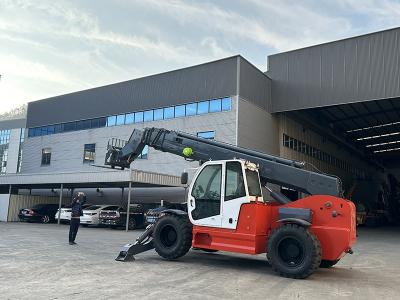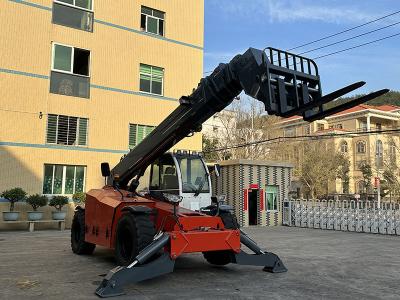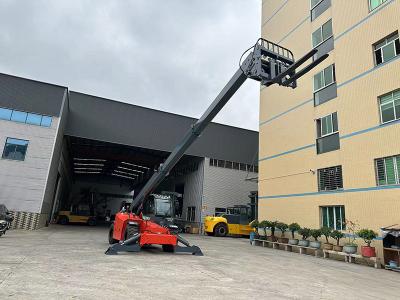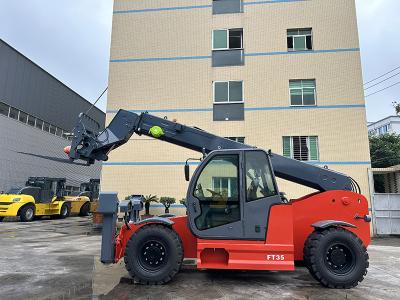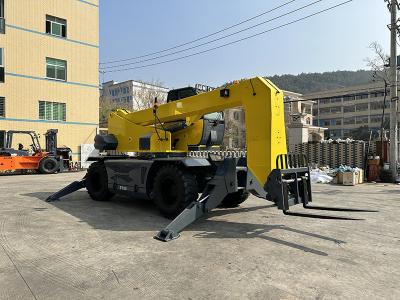No matter what type of forklift, it basically consists of the following four parts:
(1) Power part. Provides power to the forklift and is usually mounted on the back of the forklift to balance the weight.
(2) Chassis. Receive the power of the power equipment to make the forklift move and ensure its normal walking.
(3) Working part. It is used to fork or lift goods.
(4) Electrical equipment.
Different types of forklifts are formed because of the differences in the structures and installation positions of the above four forklift trucks. A counterbalanced forklift is a commonly used form of forklift. The following takes this type of forklift as an example to introduce the components of the forklift.
1. Power part.
The power components of internal fuel forklifts are mostly double-plug internal combustion engines. Including gasoline engine, diesel engine and liquefied gas engine; the power unit of electric forklift consists of battery and DC series motor. A new type of forklift truck has appeared in recent years, and they are powered by dual fuel or dual power. The drive train is the device that receives power and transfers energy to the control train. There are mainly two kinds of mechanical transmission system and hydraulic mechanical transmission system. The first type includes friction clutches, gear transmissions, universal joint transmissions, and a main drive and differential mounted on the transaxle; the latter replaces the friction clutch with a hydrodynamic distance converter, and the rest is the same as the drive shaft . In recent years, new forklifts have appeared, using a fully hydraulic drive system. Reduce transmission parts to ensure reliability.
2. Rack part.
The action system is a device that ensures the rolling operation of the forklift and supports the entire forklift, including brackets, axles, wheels and suspension devices, etc.; the front axle of the forklift is a drive axle, and this front axle must ensure the front axle load during the handling process. In order to improve the adhesion quality of the transmission wheel, increase the adhesion to the ground to ensure that the driving force of the engine is fully utilized. The next bridge is the steering bridge. The steering wheel is installed in front of the driver, and the joystick parts such as the gear lever are placed on the right side of the driver's seat. The steering system refers to the system that makes the forklift travel direction according to the wishes of the operator. The steering system can be divided into mechanical steering system and power steering system according to the energy required for steering. Steering gear mainly refers to the driver's physical fitness as steering energy, including three parts: steering, steering, driving, and manipulation; the latter is a steering device, which has both the physical fitness of the athlete and the power of the engine. Under normal circumstances, the energy required for forklift steering is only a very small part, mainly provided by the engine through the steering afterburner. However, when the steering after burning device fails, the steering task of the car should generally be undertaken by the driver. When the internal combustion forklift is used, the steering and walking are changeable. In order to reduce the driver's manipulation burden, the internal combustion forklift mostly adopts a power steering device. Commonly used power steering devices include integral power steering gear, semi-integrated power steering gear and steering booster. Brakes are systems that slow down or stop a forklift. The device includes a brake and a brake drive shaft. According to the different braking energy, the braking system can be divided into three categories: dynamic braking system and servo braking system. First, the braking energy is mainly provided by the driver's physical energy; the second is completely dependent on the potential energy in the form of air pressure or water pressure as braking energy; the latter is the combination of the former and the middle.
The balance weight is set behind the forklift truck to balance the quality of the goods at the front end of the forklift truck. The power unit (internal combustion engine) or battery of the forklift truck is usually installed behind the forklift truck to achieve balance.
3. Work section.
The workbench is a forklift directly operated for loading and unloading operations. It includes the following 5 parts:
(1) Pick-up tool. Various tool boxes represented by forks are used for fork opening, clamping and shoveling.
(2) Hanger. For the hauling of forks or other working devices and hauling goods.
(3) Bracket. It is the frame of the workbench, and most parts of the work equipment are mounted on the gantry. The two-section gantry is composed of an outer gantry and an inner gantry that can be lifted up and down along the outer gantry; the three-section gantry is composed of inner, middle and outer gantry.
(4) Bracket tilting device. It is mainly composed of tilting oil cylinder, which realizes the front and rear tilting of the mast.
(5) Lifting device. Towing. Under-lift power unit and towing unit. Main sprocket. Sprocket. It is composed of the hoisting cylinder that drives the lifting of the rack.
6) Hydraulic control system. Through the lifting and lowering of goods, the inclination of the gantry and other hydraulic system actions, the combination of timely control devices is realized. Including hydraulic components, pipelines, operating mechanisms, etc.
4. Electrical equipment.
Power equipment is mainly composed of batteries, forklift lighting, various alarms, alarms and other electronic components and circuits. The electric forklift adopts a series-excited DC motor, and the internal combustion engine forklift adopts an electric starter and is equipped with a high-voltage spark ignition device.















